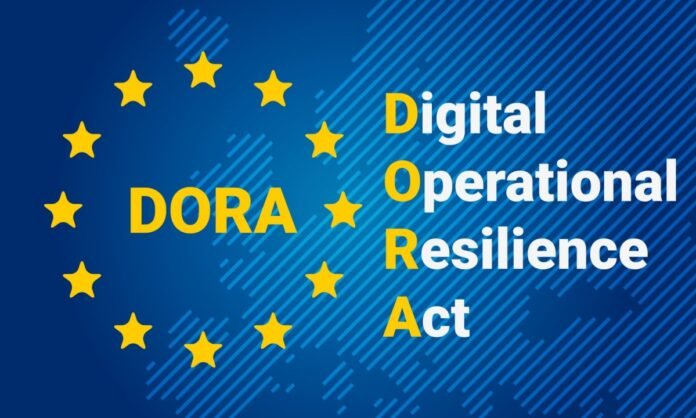Navigating the Digital Operational Resilience Act (DORA): A New Era for Financial Institutions
As of January 17, 2024, the Digital Operational Resilience Act (DORA) is officially in effect, marking a significant shift in the regulatory landscape for financial institutions across the European Union. This legislation mandates a comprehensive approach to operational resilience, compelling organizations to transition from mere preparation to active compliance and ongoing risk management. The implications of DORA are profound, as it aims to fortify the financial sector against a backdrop of increasing cyber threats and technological vulnerabilities.
The Essence of DORA: A Framework for Resilience
DORA is designed to establish a unified regulatory framework that enhances the security of network and information systems within the financial sector. It imposes stricter regulations on banks and their IT providers, necessitating enhanced IT risk management, resilience testing, and oversight of third-party risks. A critical component of DORA is the requirement for financial institutions to assess “concentration risk” associated with outsourcing essential functions to third-party providers. This focus on third-party risk management is particularly relevant in light of recent incidents, such as the CrowdStrike outage, which highlighted the vulnerabilities inherent in relying on external service providers.
A Continuous Journey Beyond Compliance
Achieving compliance with DORA is not a one-time event but rather a continuous journey. Organizations must recognize that true cyber resilience requires ongoing effort, including regular risk assessments and the integration of third-party providers into long-term security strategies. As organizations analyze their existing processes, they are likely to identify gaps that need to be addressed swiftly. However, it is crucial to understand that compliance is merely a stepping stone toward a more robust security posture.
Organizations should prioritize “quick wins” and leverage external expertise to navigate the complexities of DORA efficiently. Managed service providers can offer specialized knowledge and support, allowing internal teams to focus on core business functions while ensuring that risk assessments remain a priority. Continuous evaluation of risks, particularly when integrating new technologies or third-party suppliers, is essential to maintaining a strong security posture.
The Importance of Third-Party Risk Management
DORA fundamentally alters how financial institutions manage operational risk, emphasizing the need for a dynamic understanding of the risk landscape. Financial entities are now required to monitor ICT risks comprehensively, tracking and assessing all risks associated with their systems, applications, and infrastructure. By establishing a robust methodology for conducting ICT risk assessments, organizations can identify vulnerabilities and threats that could impact their operations.
The regulation also underscores the importance of legacy systems in the context of evolving cyber threats. DORA mandates that all legacy ICT infrastructure be included in risk assessments, recognizing that outdated systems can pose significant vulnerabilities. As financial institutions invest in cybersecurity, they must also address the challenges of legacy modernization to ensure compliance with DORA.
Shifting from Reactive to Proactive Cybersecurity
DORA represents a paradigm shift in how financial institutions approach cybersecurity. It establishes a legal mandate that requires organizations to ensure their ICT systems are resilient enough to withstand various threats, from sophisticated cyberattacks to basic service outages. Compliance with DORA is complex, necessitating a comprehensive overhaul of risk management programs and a reevaluation of third-party relationships.
Financial institutions must rigorously test their systems, promptly report incidents, and ensure that all technology partners adhere to the same high standards. This proactive approach to resilience building is essential, as the stakes are high—non-compliance could result in significant financial penalties.
Collaboration and Transparency: The Cornerstones of Success
Success under DORA hinges on transparency and communication between financial institutions and their third-party vendors. Banks must clearly articulate DORA’s expectations, embedding these requirements into contracts and service-level agreements. However, smaller vendors may struggle to meet these standards, necessitating investment from larger institutions to help elevate their capabilities.
DORA allows for a risk-based approach, enabling financial entities to focus their diligence on areas where risks are most pronounced. This regulatory framework encourages collaboration, pushing organizations to work closely with their suppliers to strengthen not only their operations but also the entire ecosystem they rely on.
Conclusion: Building a Resilient Future
The Digital Operational Resilience Act marks a significant evolution in the regulatory landscape for financial institutions in the EU. By prioritizing operational resilience and third-party risk management, DORA compels organizations to adopt a proactive stance against cyber threats. While compliance may seem daunting, it presents an opportunity for financial institutions to enhance their security posture and build a more resilient future. As the financial sector navigates this new terrain, the emphasis on collaboration, transparency, and continuous improvement will be essential in fostering a secure and resilient operational environment.

